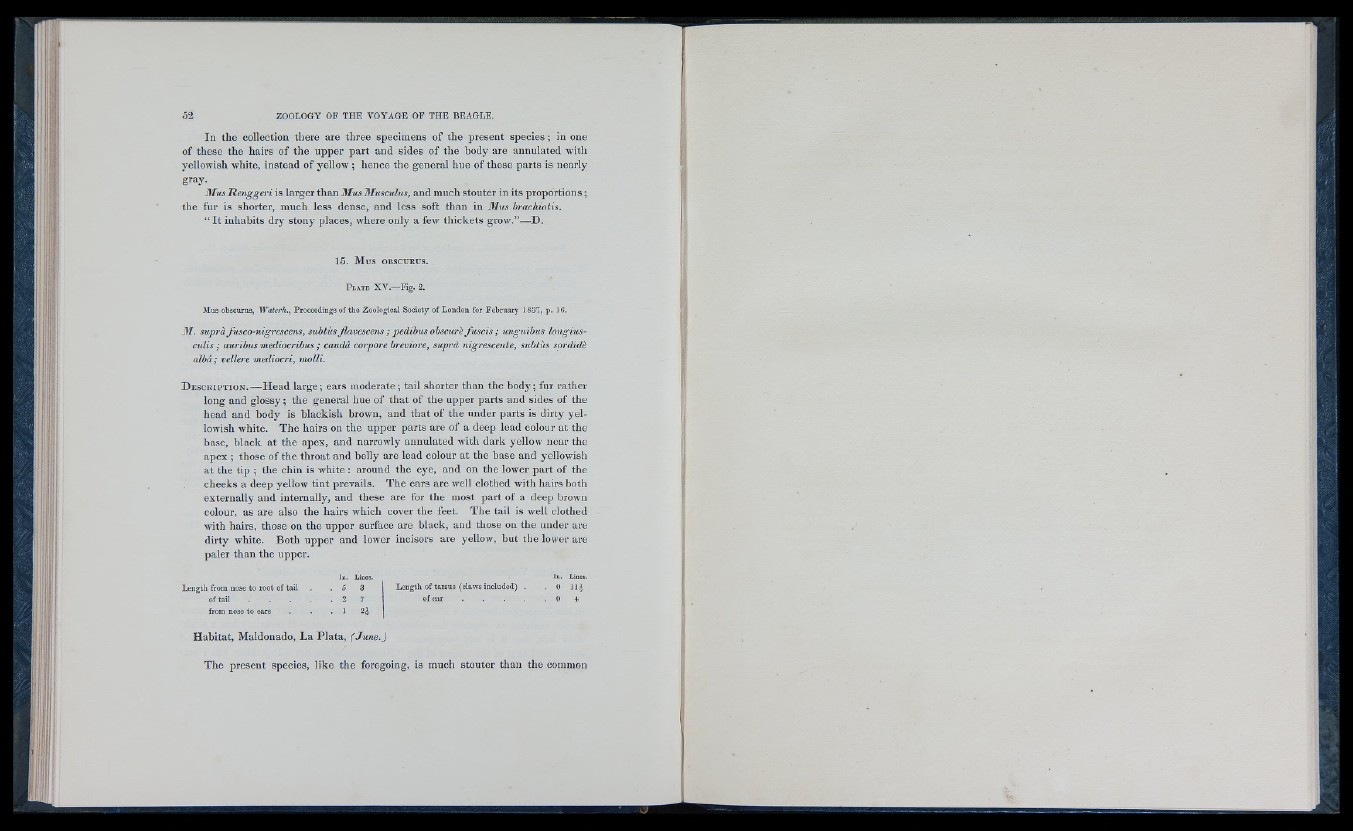
In the collection there are three specimens of the present species ; in one
of these the hairs of the upper part and sides of the body are annulated with
yellowish white, instead of yellow ; hence the general hue of these parts is nearly
gray.
3Ius Renggei'i is larger than Mus 3Ixisculus, and much stouter in its proportions;
the fur is shorter, much less dense, and less soft than in Mus brachiotis.
“ It inhabits dry stony places, where only a few thickets grow.”—D.
15. Mus OBSCURUS.
Mus obscuras, Waterh.,
P late X V .— Fig. 2.
of the Zoological Society of London for February 1837, p. 16.
31. suprà fusco-nigrescens, subtus flavescens ; pedibus obscurè fuscis; unguibus longius-
cidis ; auribus mediocribus ; caudd corpore breviore, suprà nigrescente, subtiis sordidè
albâ ; vellere mediocri, molli.
D e s c r i p t i o n .— Head large; ears moderate; tail shorter than the body; fur rather
long and glossy ; the general hue of that of the upper parts and sides of the
head and body is blackish brown, and that of the under parts is dirty yellowish
white. The hairs on the upper parts are of a deep lead colour at the
base, black at the apex, and narrowly annulated with dark yellow near the
apex ; those of the throat and belly are lead colour at the base and yellowish
at the tip ; the chin is white : around the eye, and on the lower part of the
cheeks a deep yellow tint prevails. The ears are well clothed with hairs both
externally and internally, and these are for the most part of a deep brown
colour, as are also the hairs which cover the feet. The tail is well clothed
with hairs, those on the upper surface are black, and those on the under are
dirty white. Both upper and lower incisors are yellow, but the lower are
paler than the upper.
Length from nose to root of tail
of tail
from nose to ears
In. Lines.
5 3
2 7
Length of tarsus (claws included)
of ear . . .
In. Lines.
0 1 14
0 4
Habitat, Maldonado, La Plata, (June.)
The present species, like the foregoing, is much stouter than the common